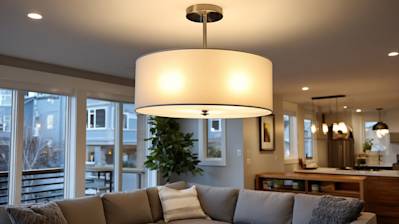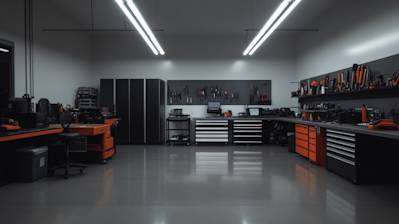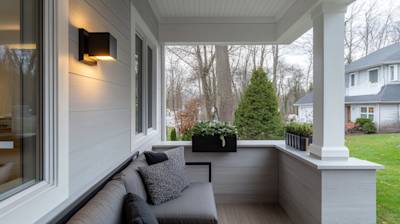If you're a homeowner or DIY enthusiast, you may have found yourself staring at a confusing array of wires while attempting to install a 3-way switch. It no longer needs to be a daunting task. This article will walk you through the process of wiring a 3-way electrical switch with ease. But before pulling out your tools, it is essential to understand what a 3-way switch is and why it's used.
Understanding a 3-Way Electrical Switch
A 3-way switch is one that allows you to control a light source from two separate points. It's extremely useful in areas where one light source is controlled from multiple locations, like the top and bottom of a staircase, or the entrance and exit of a large room. The term "3-way" signifies three terminal connections on the switch: one "common" and two "traveler" terminals.
Materials Required for Wiring a 3-Way Switch
Before you start working, make sure that you have gathered all the necessary materials:
- Two 3-way switches
- Circuit tester/voltmeter
- Wire strippers
- Screwdrivers
- 14-gauge electrical wire (color-coded)
- Electrical tape
- Wire connectors
Step-by-Step Guide on How to Wire a 3-Way Electrical Switch
1. Turn the Power Off
The first and most crucial step when working with electrical wiring is to ensure you turn off the power supply at the main breaker or fuse box to avoid any potential hazards. Once switched off, use your circuit tester or voltmeter to confirm there is no electrical current flowing through the wires.
2. Install the First 3-Way Switch
Identify the box where the power is coming from (source); this is where you’ll be installing the first 3-way switch. Connect the black (hot) wire to the dark-colored terminal, often referred to as the “common” terminal. Attach two red or black (traveler) wires to the other two terminals, which are usually the same color and located on the same side of the switch.
3. Run Wires to the Second Switch
In the "middle" electrical box, you'll need to attach both traveler wires to the corresponding traveler terminals on the second 3-way switch. These should match the connections made at the first switch.
4. Attach the Load Wire
In the last box, this time connect the black (load) wire to the common terminal of the second switch. This wire should be leading to your light fixture.
5. Connect the Neutral Wires
At each box, connect all the white (neutral) wires together with a wire connector. They are not connected to the switch but are required to complete the circuit.
6. Understand the Grounding
Lastly, connect all the ground wires (green or bare wire) together and attach them to the green grounding screw on the switch. This provides a safe path for electrical current in case of a fault.
7. Testing Your Connections
Once all the connections are made, you can turn the power back on at the main breaker box. Test each switch to ensure that they correctly control the light fixture. If either switch is not controlling the light, switch off the breaker again and review the connections.
Understanding Common Issues
If the switches aren't working, then the typical culprit is often incorrect wiring with the common and traveler wires. Double-check these connections first. If this doesn't resolve your issue, consult with a licensed electrician to avoid causing more significant problems.
When to Call a Professional
Wiring a 3-way switch can be a fun and educational DIY project for homeowners. However, if you're uncomfortable dealing with electricity or if your switches are still not working even after double-checking your connections, it might be time to call a professional electrician. It's always better to be safe than sorry when it comes to handling electrical wiring.
Wiring a 3-Way Switch is Achievable
Understanding how to wire a 3-way electrical switch is an essential skill that can make your life easier and your DIY home improvement projects more varied. By following these steps and knowing when to seek professional help, you can install a 3-way switch successfully.
Frequently Asked Questions on Wiring a 3-Way Electrical Switch
What materials are required to wire a 3-way switch?
To wire a 3-way switch, you'll need a pair of 3-way switches, 2-wire and 3-wire cables with grounds, a light fixture, a wire stripper, screwdrivers, and a voltage tester.
Can I wire a 3-Way Electrical Switch myself?
Yes, you can wire a 3-way electrical switch yourself, but you must have a good understanding of electrical circuits and take proper safety precautions. If you're not experienced with electrical work, it's safest to hire a professional electrician.
What are the steps to wiring a 3-Way Electrical Switch?
The steps to wire a 3-way electrical switch involve de-energizing the circuit, preparing the switch box, attaching the wires to the first switch, attaching the wires to the second switch, carefully placing the switches into the boxes, and then restoring power to test functionality.
How do I identify a 3-way switch from other switches?
A 3-way switch usually has four terminals: one dark screw (the common terminal), and two brass traveler screws. Unlike a regular light switch which has two terminals, a 3-way switch has three.
How does a 3-way switch system work?
A 3-way switch system lets you control a light fixture from two different locations. They don't connect directly to the light; instead, there are switches at both ends, with the fixture controlled by the hot wire that connects to the common screw, or COM.
What important safety precautions should be taken while wiring a 3-way switch?
Always turn off the power at the circuit breaker before starting work. Inspect your tools for any damage, utilize a non-contact voltage tester to confirm the power is off, keep your work environment clean, and always follow the wiring diagrams and instructions that come with your 3-way switches.
What is "Traveler Wire" in 3-way switch setup?
The traveler wires in a 3-way switch system are the wires that run between the two 3-way switches in the circuit. They can be either black and red or white and black, depending upon the electrical system of your home.
Why is my 3-way switch not working?
Your 3-way switch might not work due to several reasons. The most common is an incorrect wiring setup. Other reasons can be a faulty switch, broken wires, loose connections, or a malfunctioning circuit breaker.
How do I troubleshoot a faulty 3-way switch?
Start by rechecking the wiring. If it's appropriately done and the switch is still faulty, you might want to check for loose wires or connections. If everything seems to be in order, and you're still facing an issue, it might be a good idea to call in a professional electrician.
Pros and Cons of Wiring a 3-Way Electrical Switch
Pros of Wiring a 3-Way Electrical Switch
Enhanced Control
One of the biggest advantages of wiring a 3-way electrical switch is the increased control. This wiring setup allows you to control a single light or appliances from two different locations. Typical applications include controlling the staircase light from both at the top and the bottom, or controlling a room’s light from two different entrances.
Convenience
- 3-way switch wiring improves convenience. The flexibility to turn on and off lights from two separate locations reduces the need to walk across rooms. This is particularly beneficial in larger rooms or spaces.
- The wiring of a 3-way switch on stairs greatly enhances safety by enabling you to switch on/off the lights without having to navigate in the dark.
Inexpensive and Standardized
3-way switches are standardised and can be purchased at a considerably low price. The wiring process is also quite economical, provided you have basic electrical knowledge and the right tools.
DIY Friendly
For those with some basic understanding of electrical circuits, wiring a 3-way switch can be a do-it-yourself project. This can also serve as a good learning experience about how electrical systems function.
Cons of Wiring a 3-Way Electrical Switch
Complexity
Despite the advantages, one significant drawback of wiring a 3-way electrical switch is the complexity involved. These switches involve multiple wires, connections and the need for correct placement, which can be quite challenging for novices. This can sometimes even lead to hazardous situations if not done properly.
Increased Material Requirement
- 3-way switch wiring necessitates more materials than standard light switch installations, which can increase costs. In addition to the switch, you'll need extra wire to connect the two switches.
- Often, a larger electrical box size is required to accommodate the additional wires and connections involved in 3-way switch wiring. This more extensive remodeling might necessitate more expenditure and effort.
Errors Can Lead to Non-Functioning Switches
If not wired correctly, 3-way switches may not function as intended, leading to frustration. This is more of a problem for inexperienced DIYers or non-professionals. If you mix up the common and traveler wires, the switches may not operate as planned.
Electrical Safety Risks
While wiring a 3-way switch can be a DIY task, it does entail dealing with electricity and thus comes with inherent risks. If you are inexperienced, there is a risk of electrical shock or even fire if it is not done correctly. Even with the power turned off, the risk is still present if the wiring is not correctly installed.
Summary
Learning how to wire a 3-way electrical switch is not as complex as it appears at first glance. Once you get the basics down, it's really just a matter of patiently following a few steps. Turn off the electrical breaker, connect all the wires as per their color codes, install the switch, and you're good to go. Remember, safety should always be your priority, especially when dealing with electricity.
Knowing how to wire a 3-way electrical switch also means understanding how it functions. This type of switch is particularly useful in rooms with multiple entrances, as it allows you to control a single light fixture from two different locations. With the right tools and a bit of patience, anyone can master their installation and enjoy the convenience of having a 3-way switch at home.
Whatever your reason is for wanting to learn how to wire a 3-way electrical switch, let this serve as a reminder that even the most daunting tasks can be accomplished with a bit of knowledge and practice. So go ahead and follow the steps, take precautions, and remember - once you've successfully done it, you have not only fixed a problem but also learned a valuable skill. Keep learning, keep doing!
About Sagan Electric
Welcome to Sagan Electric! We're a trusted and reputable electrical services provider proudly based in Sacramento, CA. Having been in the business for a considerable number of years, we've stood the test of time by delivering high-quality solutions while consistently living up to our reputation for excellence. We offer a comprehensive range of services, including installation, maintenance, and repair, all handled by our team of skilled and experienced electricians. We believe in doing the job right the first time and delivering outstanding customer service. Whether you are a residential or commercial client, with Sagan Electric, you're in good hands!
Tags: electrical wiring, 3-way switch, home improvement,








